Systematic measurement confirm that in multiple GEM structures higher gains can be sustained before discharges in presence of heavily ionizing background. Both gain and sustainable gain are increased by about one order of magnitude at each addition of a GEM.
The discharge probability depends on the experiment-dependent source of background, and has to be verified in realistic running conditions. For systematic studies in the laboratory, the gain is measured with soft X-rays sources or X-ray generators, while the heavily ionizing background is emulated with an 241Am alpha source; very convenient also the use of an alpha emitter, Radon 220 (generated by natural Thorium), introduced in the gas flow.
| Gain as a function of voltage in single, double and triple GEM; the ordinate provides the value of the potential applied to each GEM: | Discharge probability on exposure to alpha particles as a function of voltage applied to each GEM: |
 |
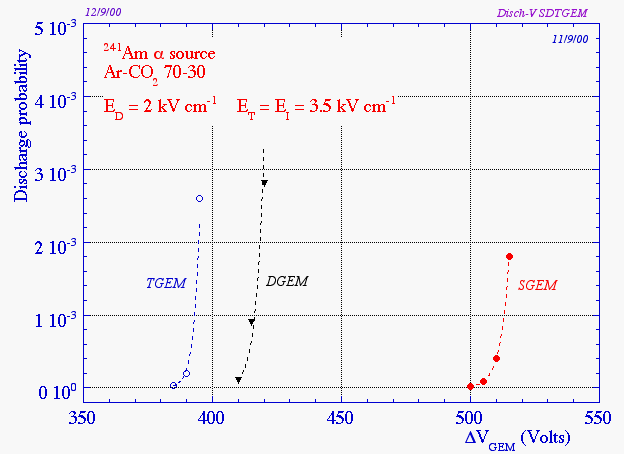 |
| Discharge probability on alphas as a function of gain for single, double and triple GEM: | Discharge probability as a function of voltage asymmetry in the double GEM: |
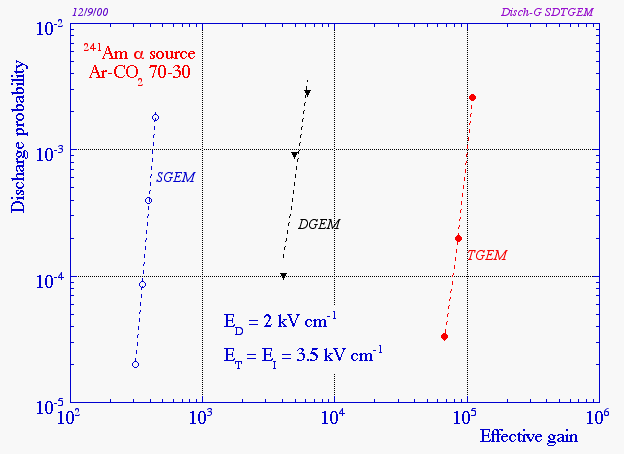 |
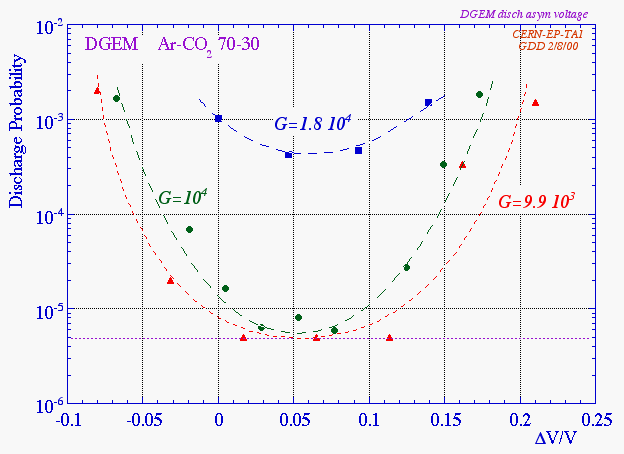 |
| Discharge probability as a function of voltage asymmetry in the triple GEM: | Discharge propagation probability from the last GEM to the readout electrode, as a function of induction field, for several connections of sectors. The curve "4 sectors up" corresponds to a full GEM of 10x10 cm2; "1 sector up" correspond to 1/4 of the area: |
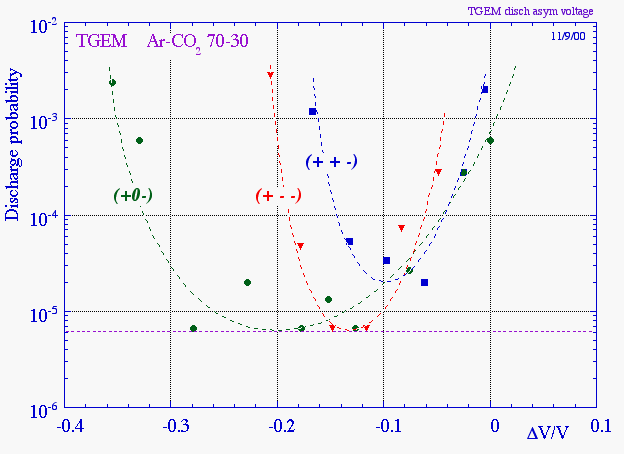 |
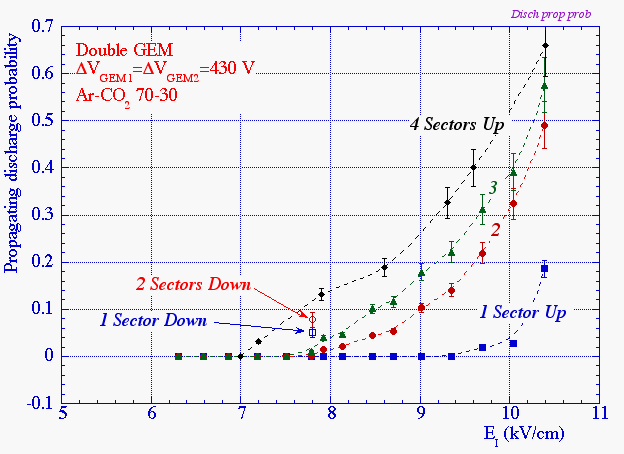 |
The discharge in one GEM (usually the last in a cascade) may remain confined to the multiplier, or propagate to the next structure. It has been found that the energy of the primary discharge (determined by voltage and capacitance) strongly affects the propagation probability. This leads to sectorization, i.e. separation of GEM electrodes in segments, individually powered through high value resistors, to reduce the discharge energy (see GEM POWERING).
To know more, see the full study in:
S. Bachman et al, Discharge studies and prevention in the gas electron multiplier (GEM), Nucl. Instrum. Methods A479(2002)294)
